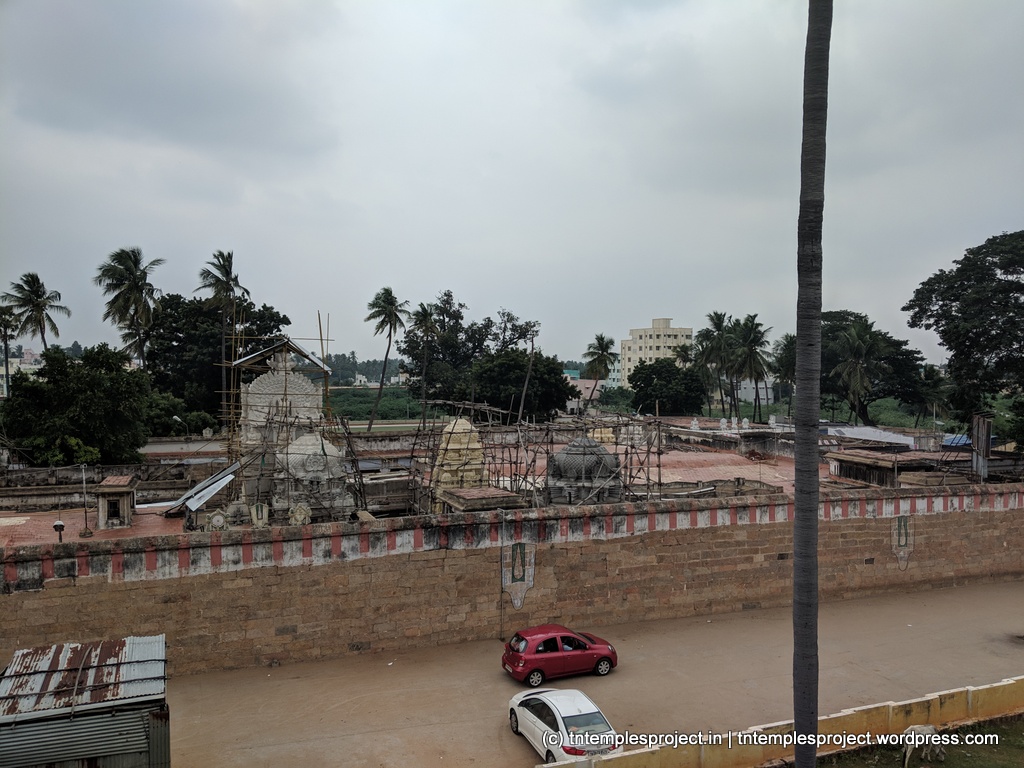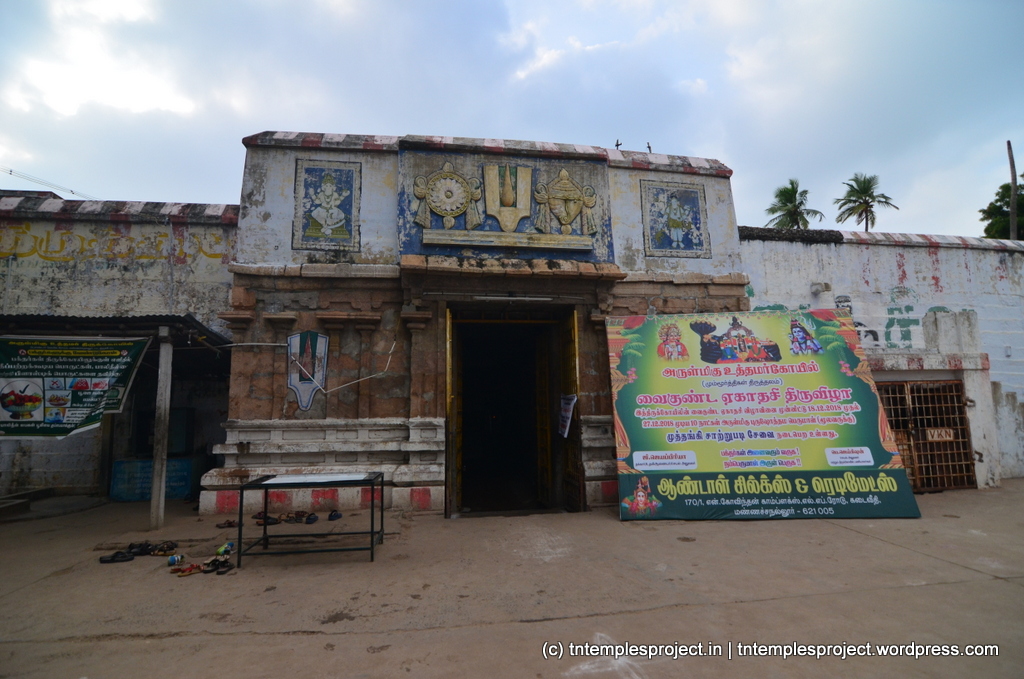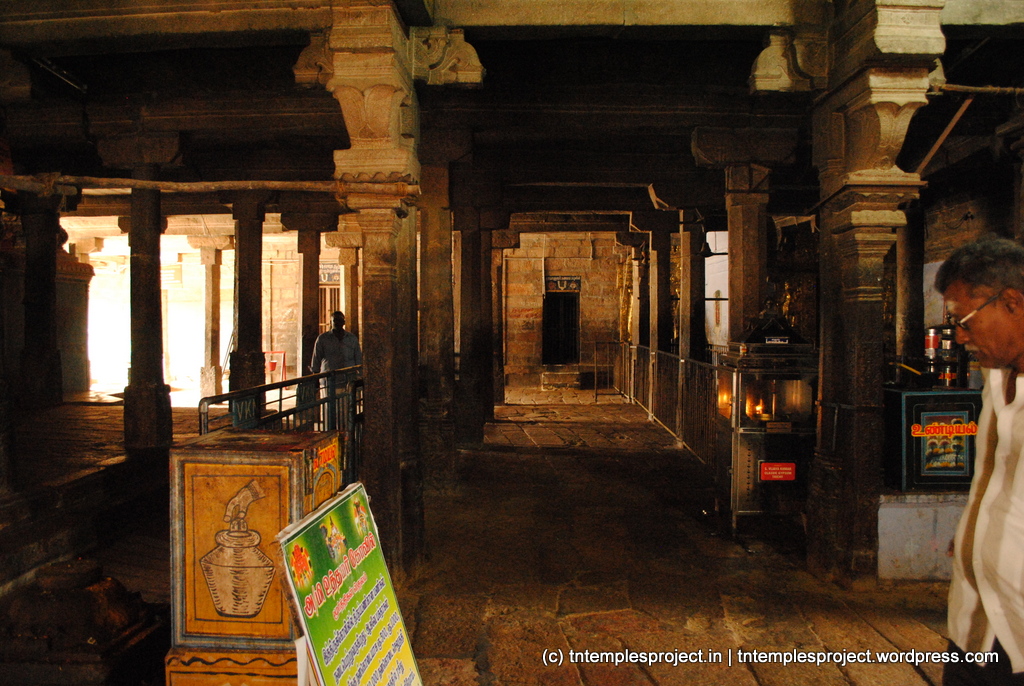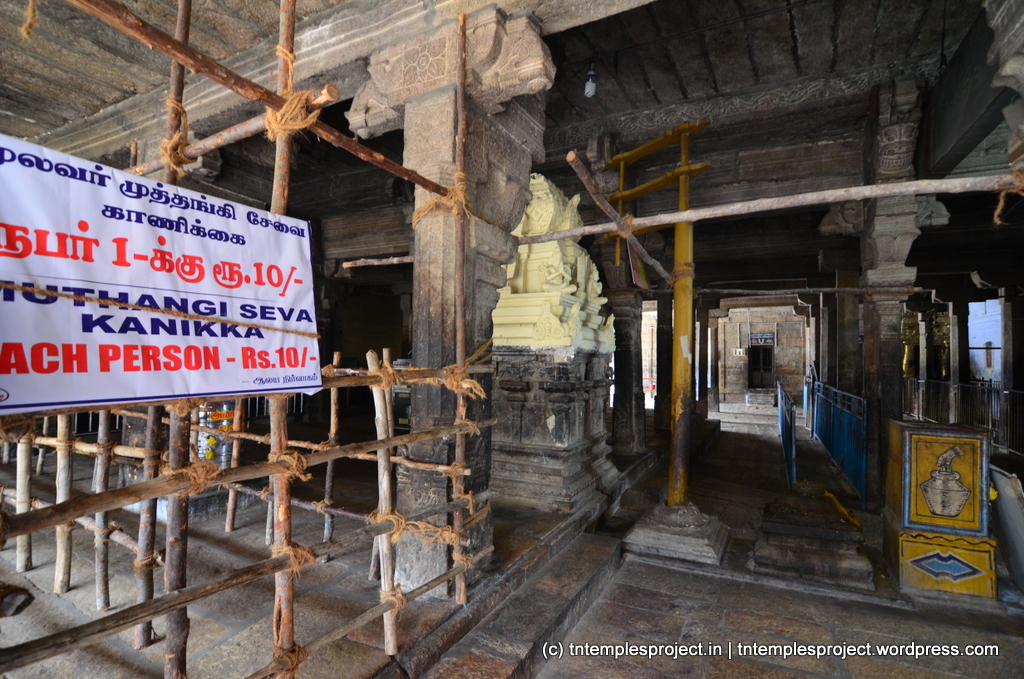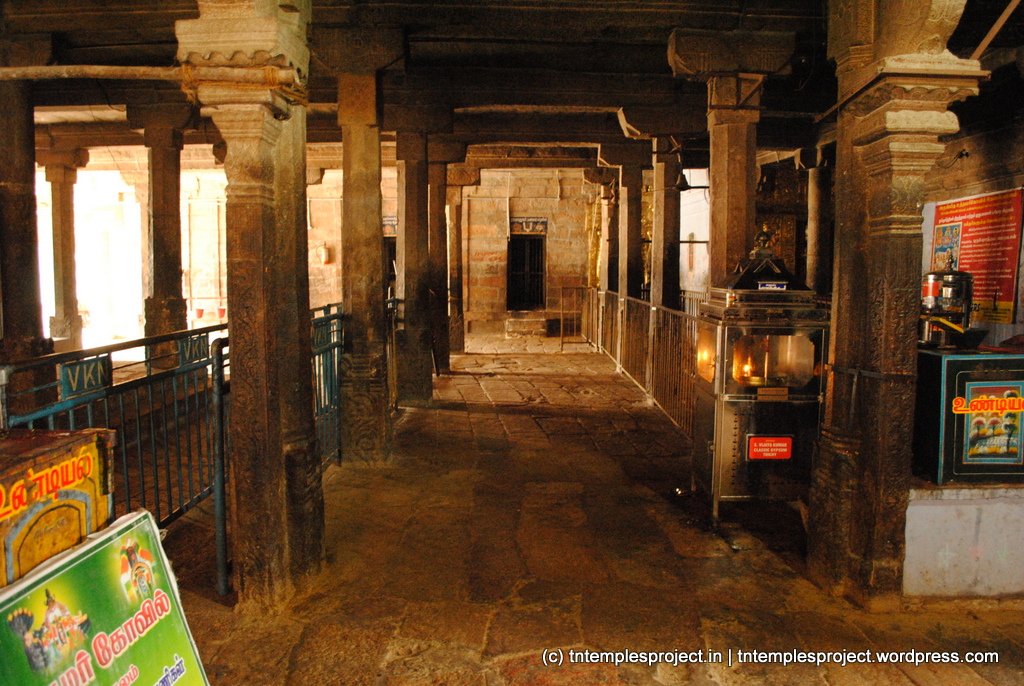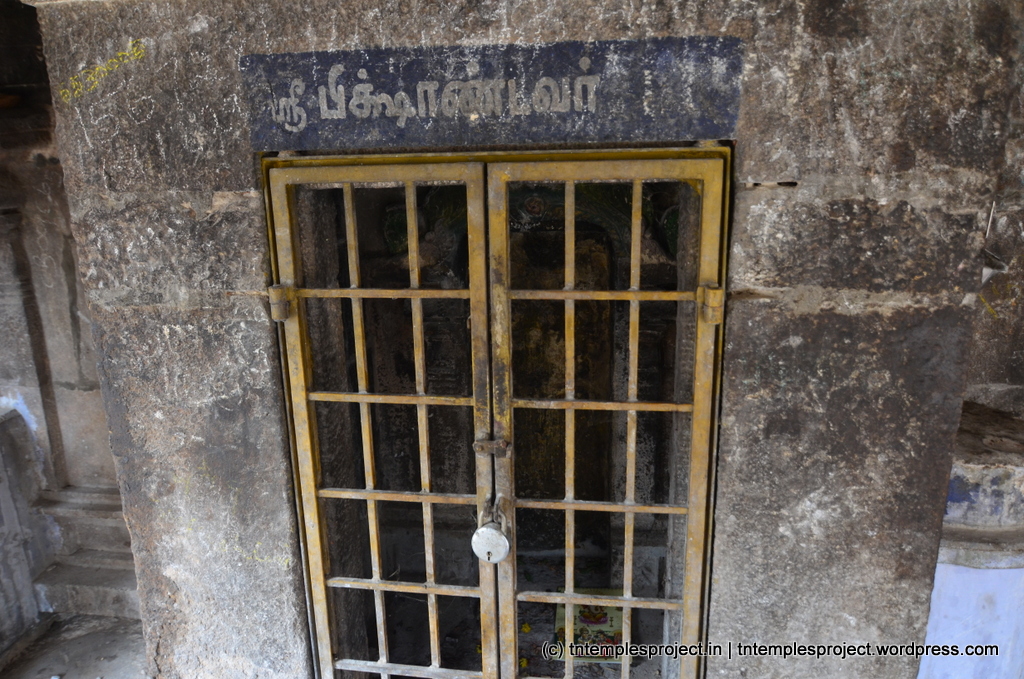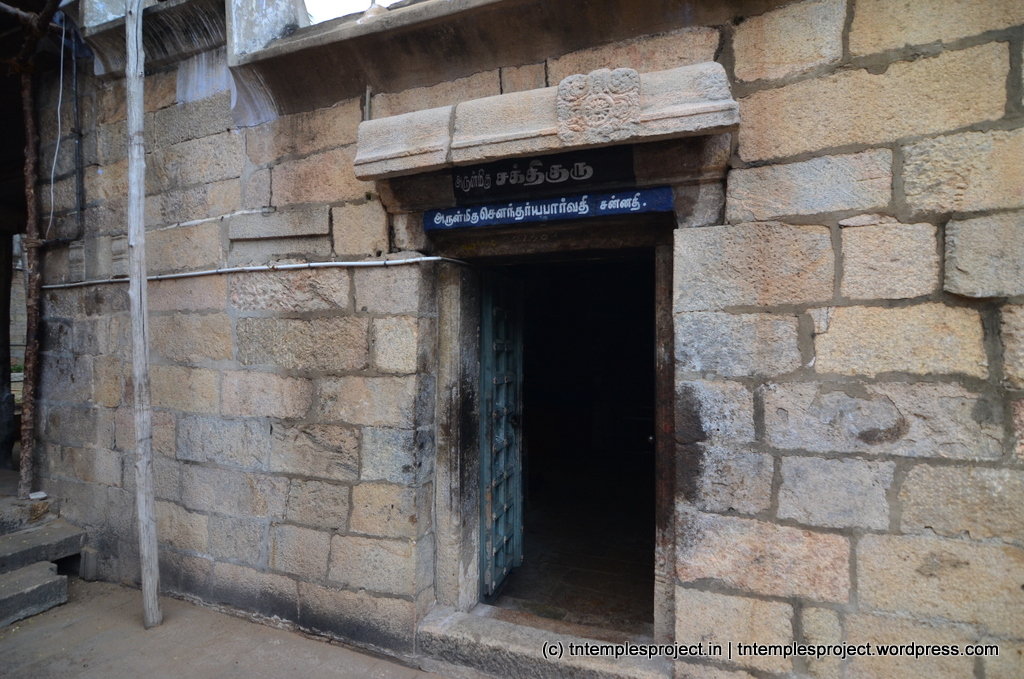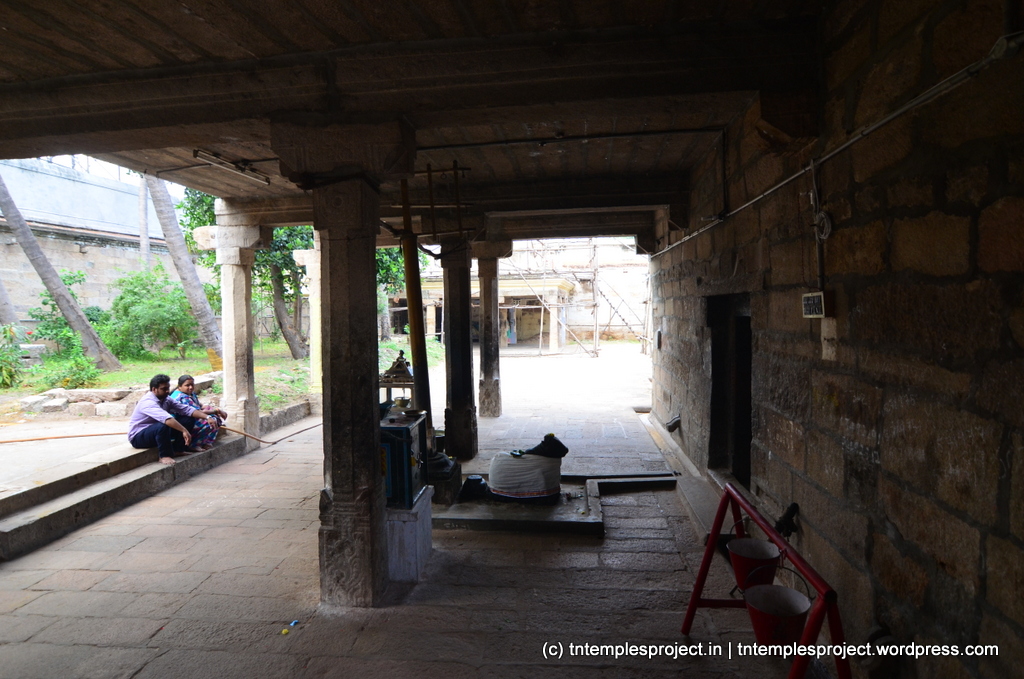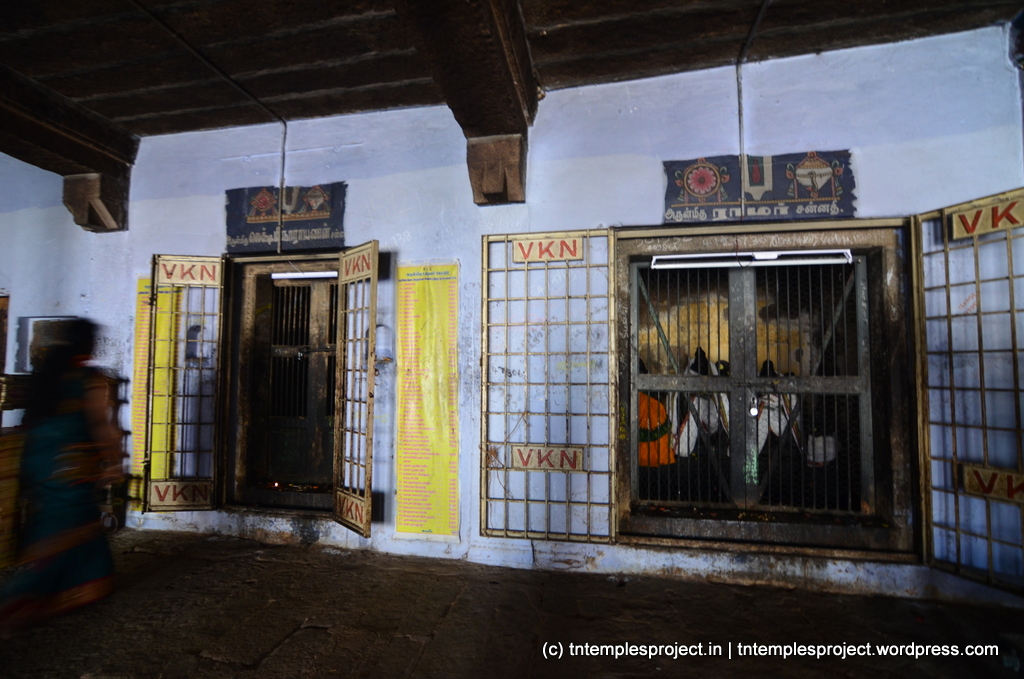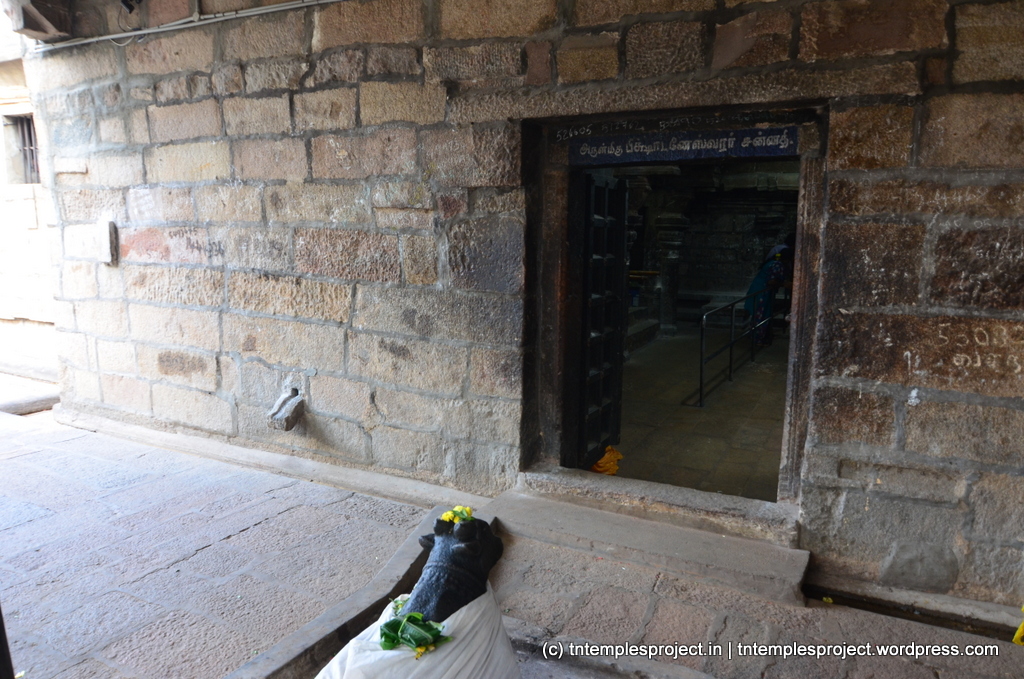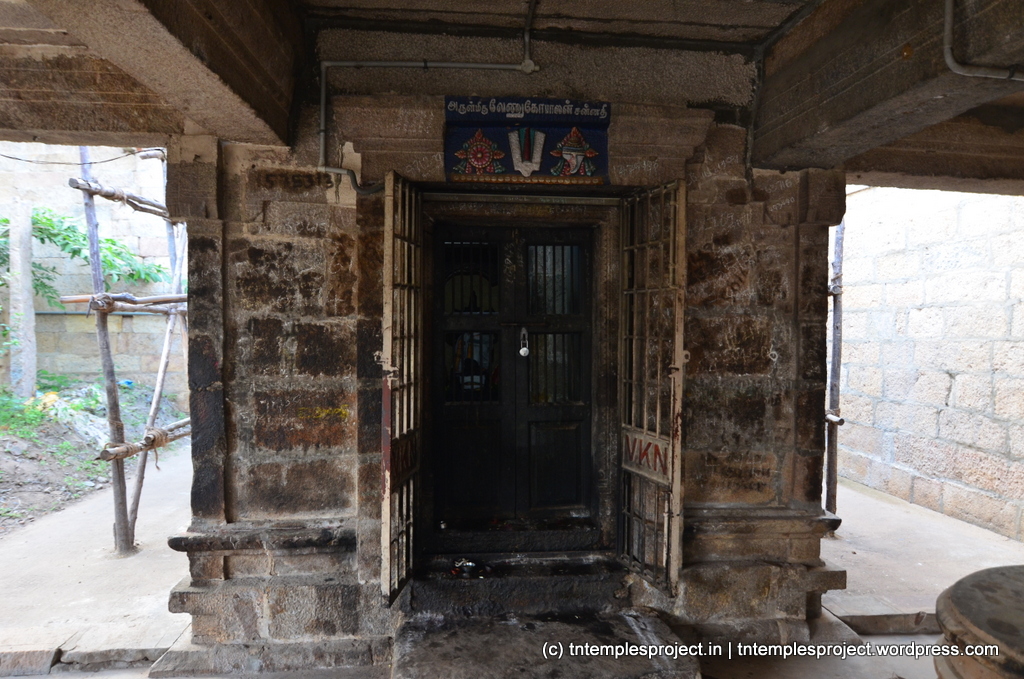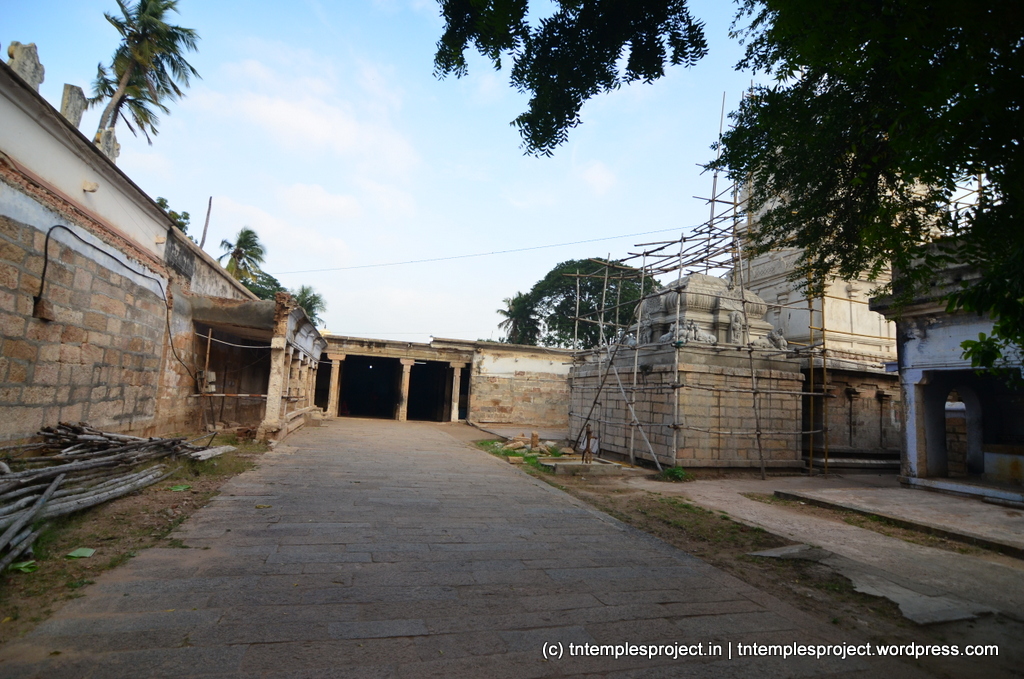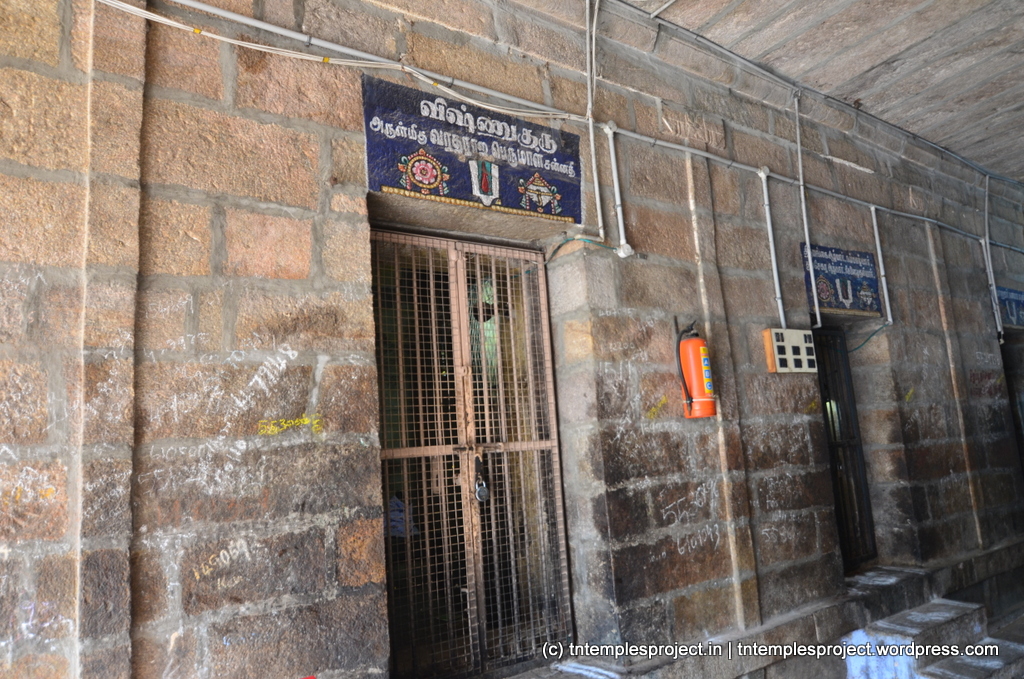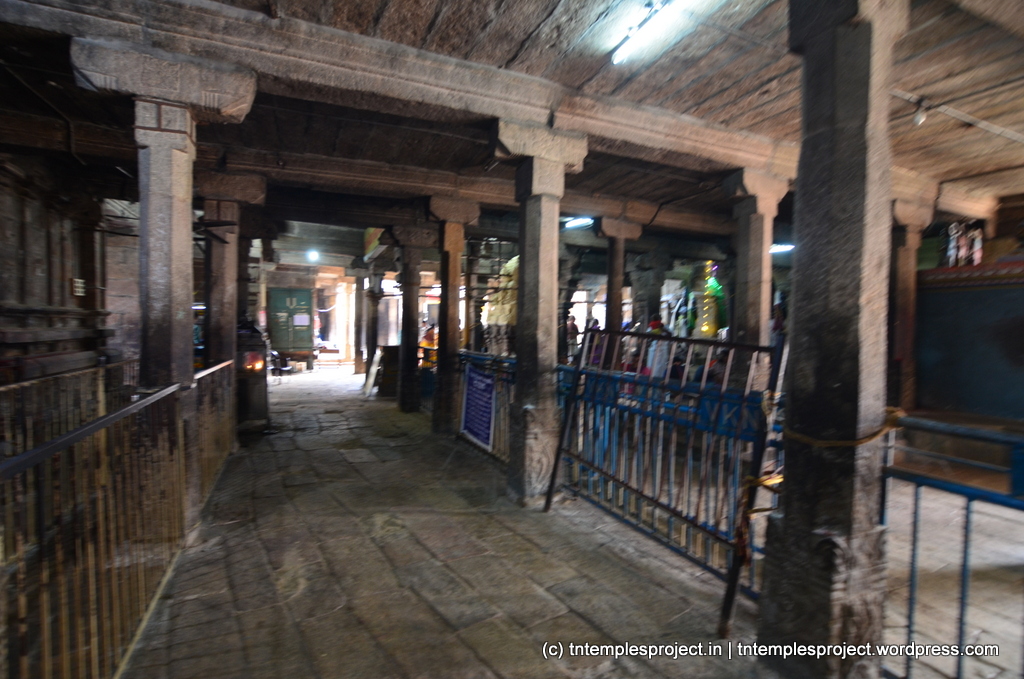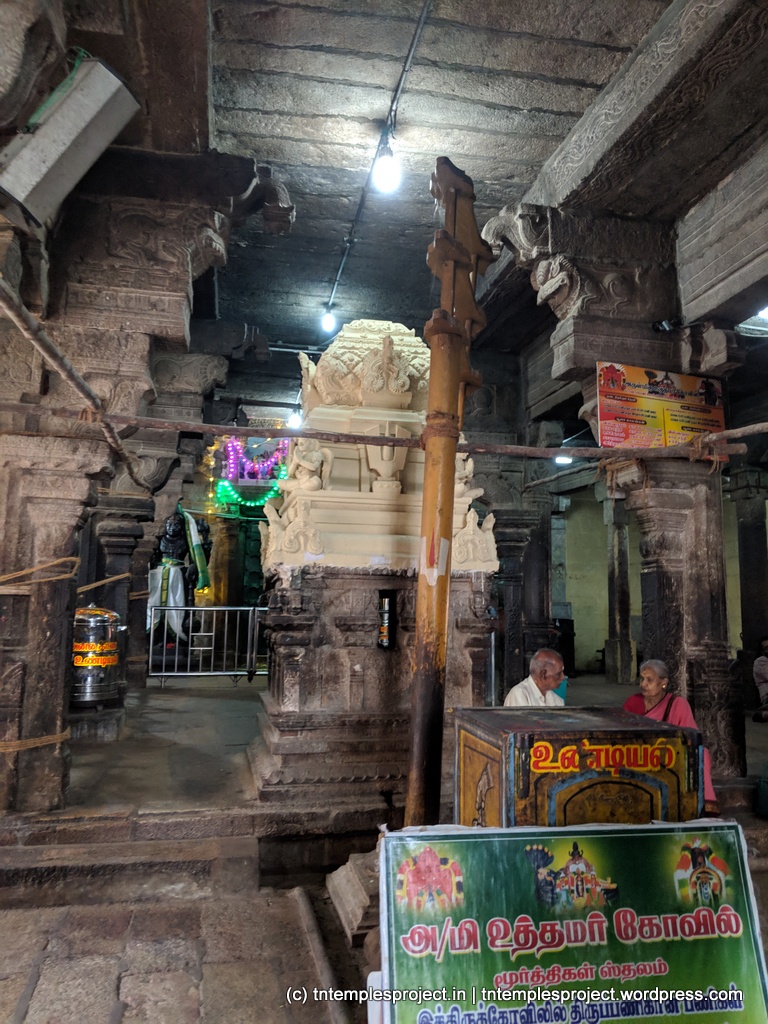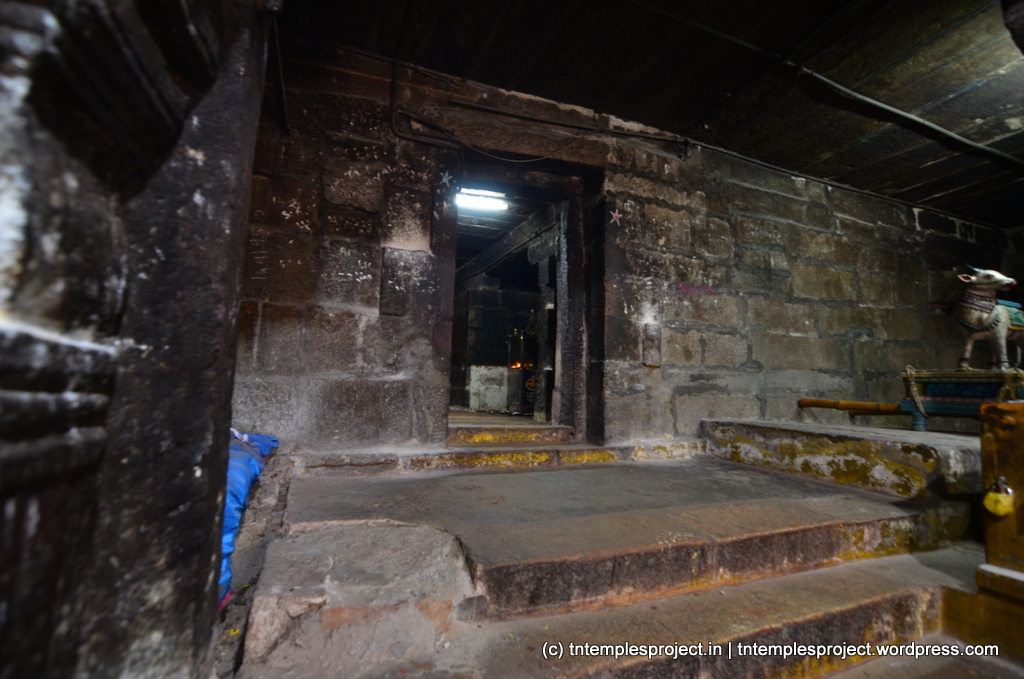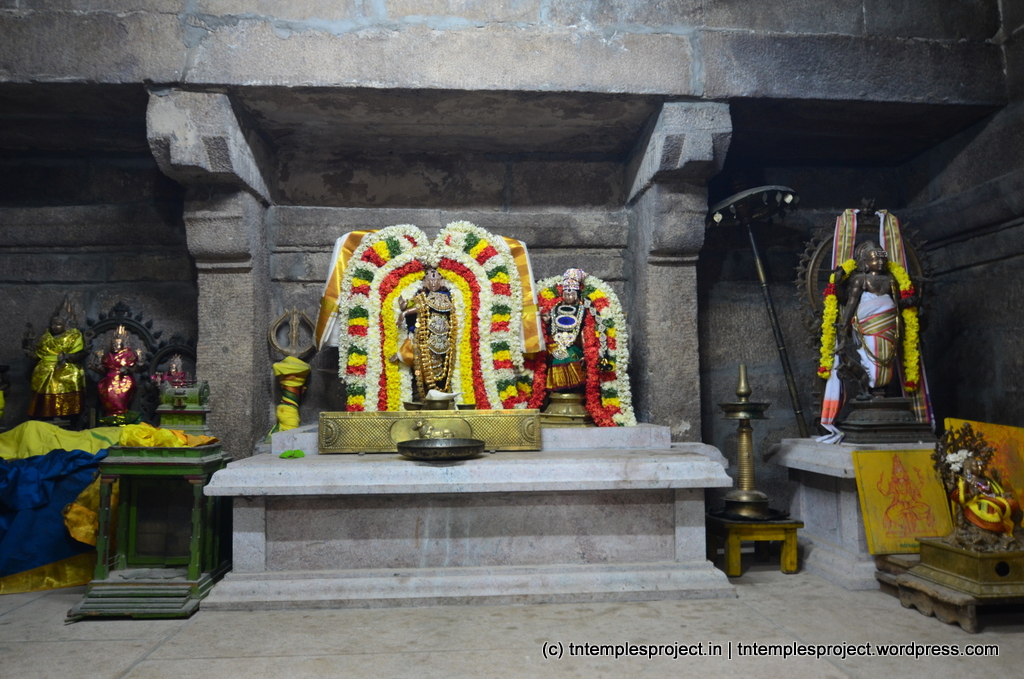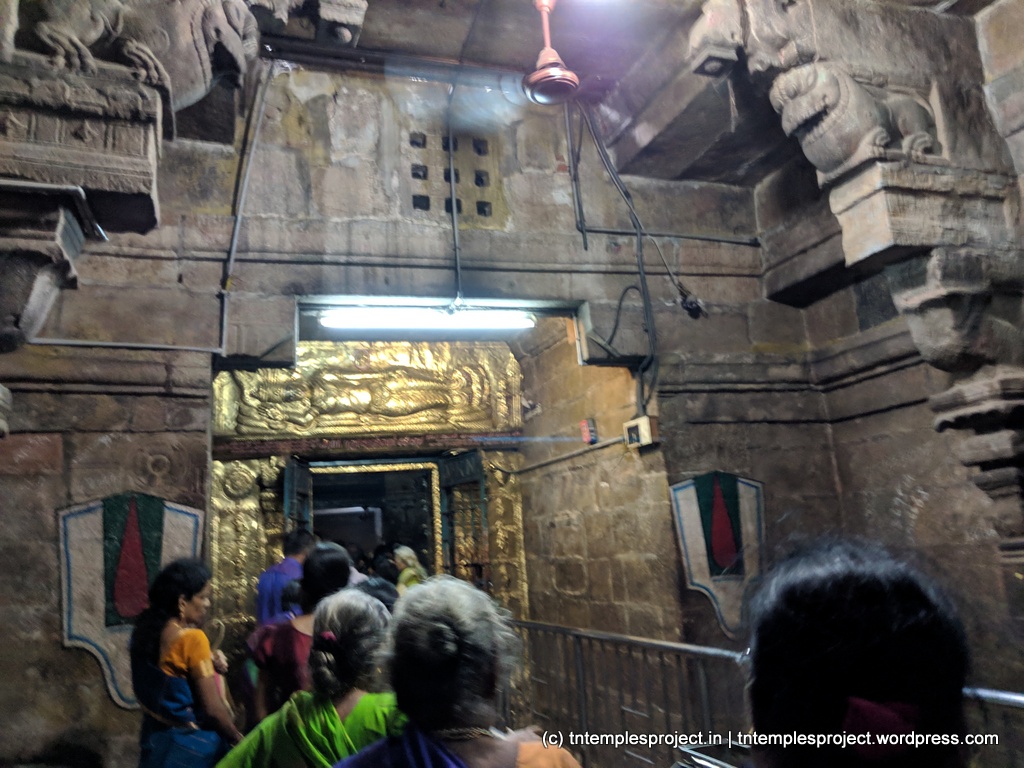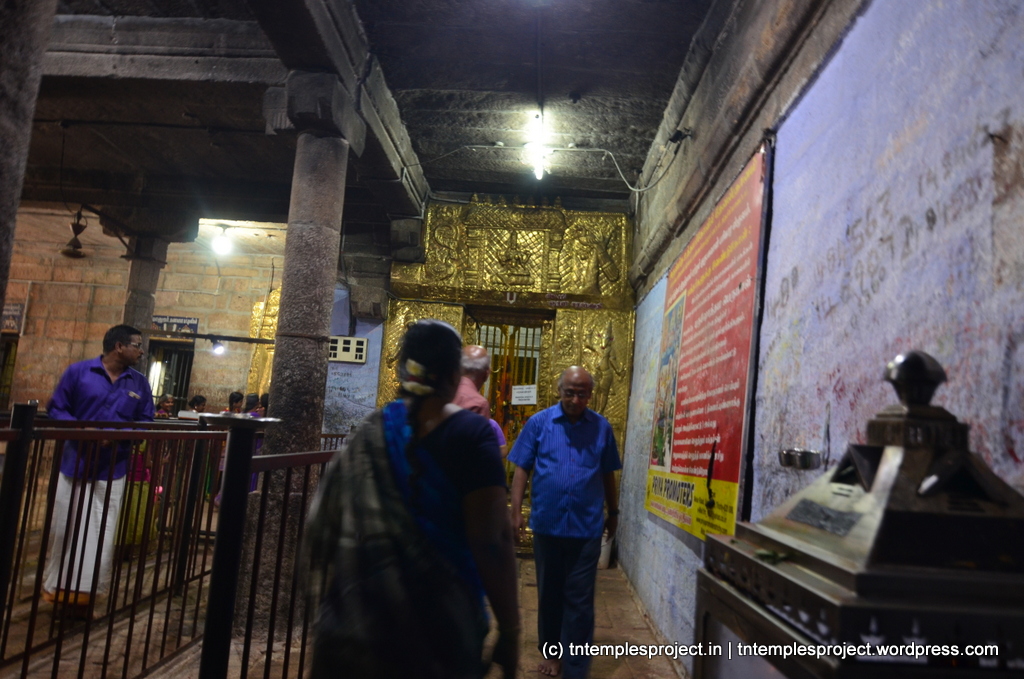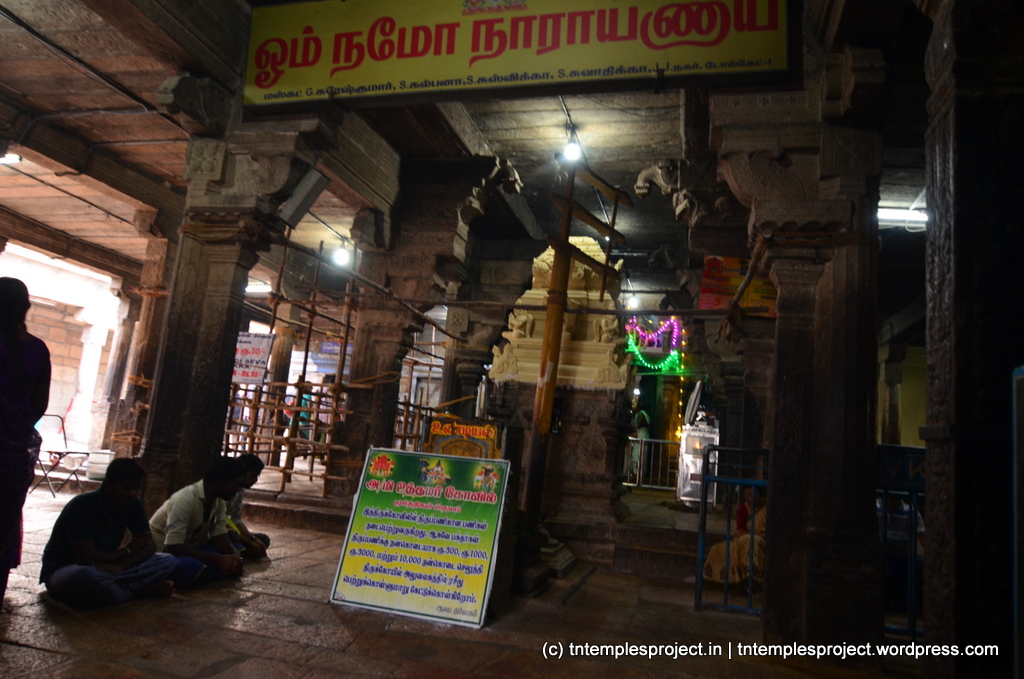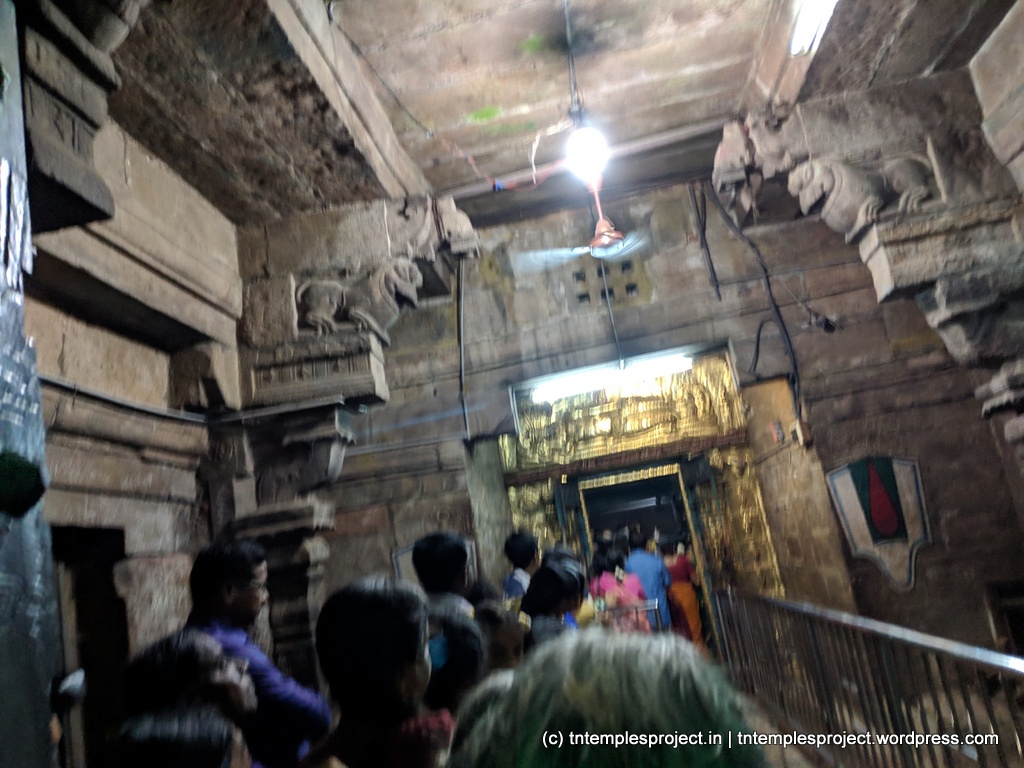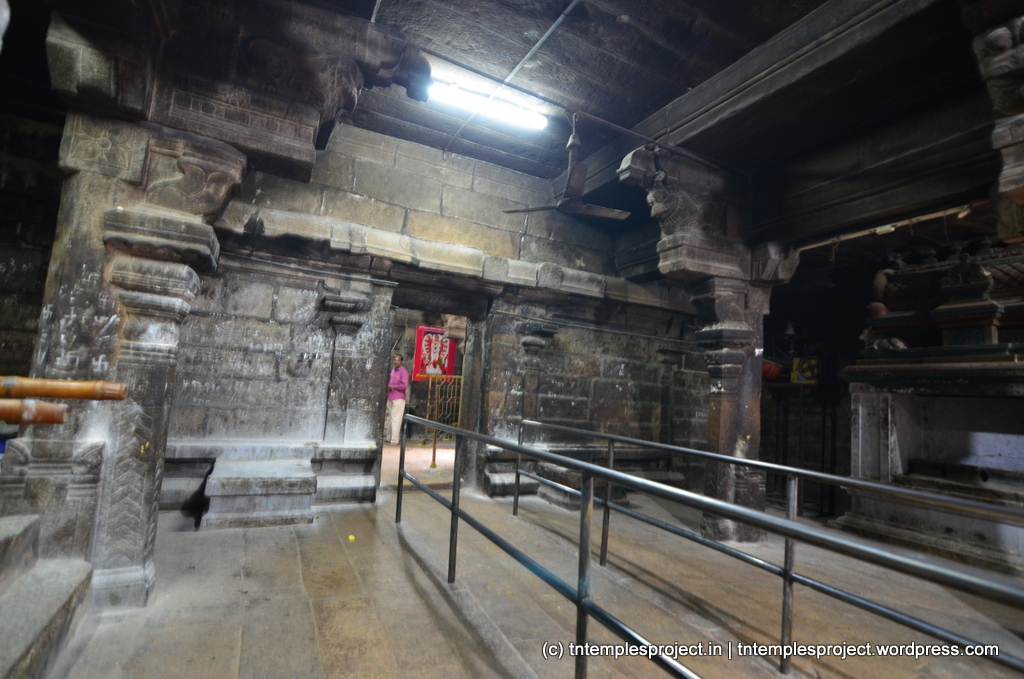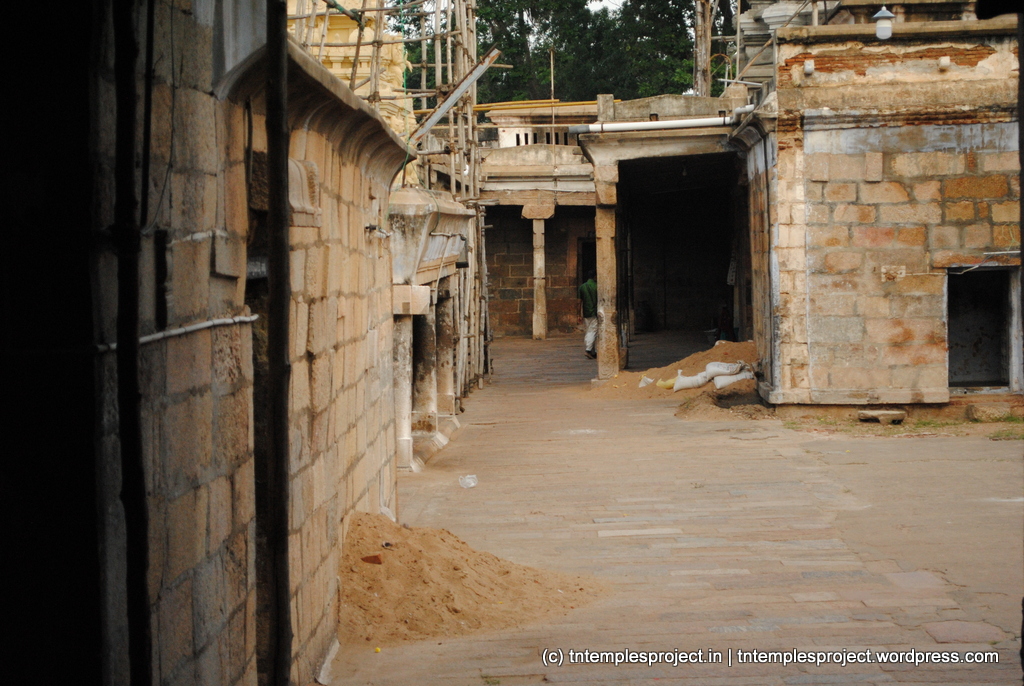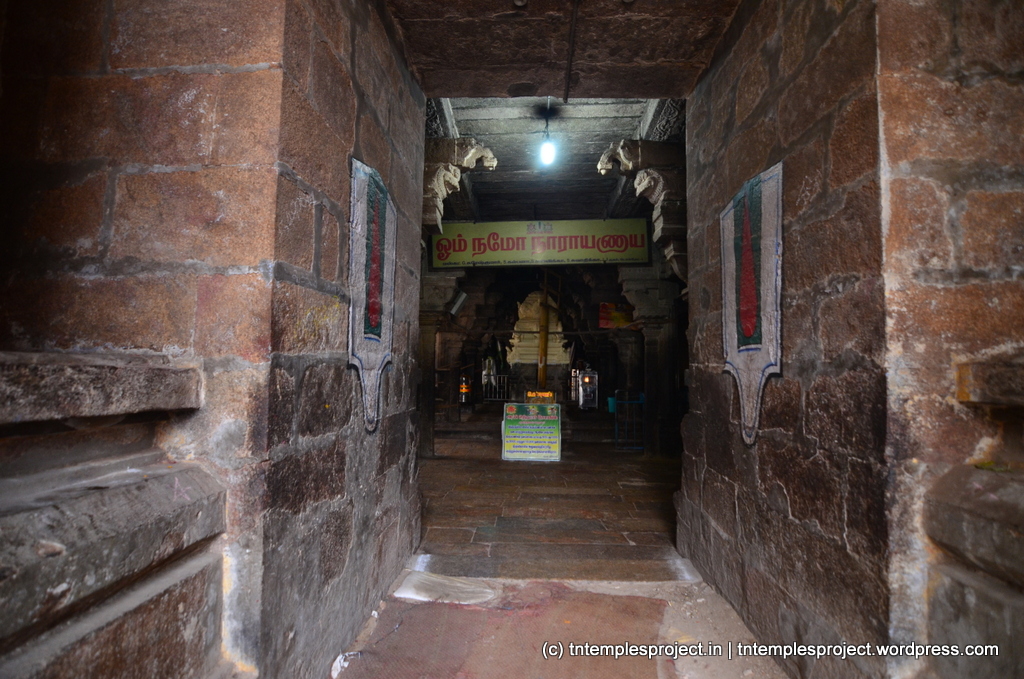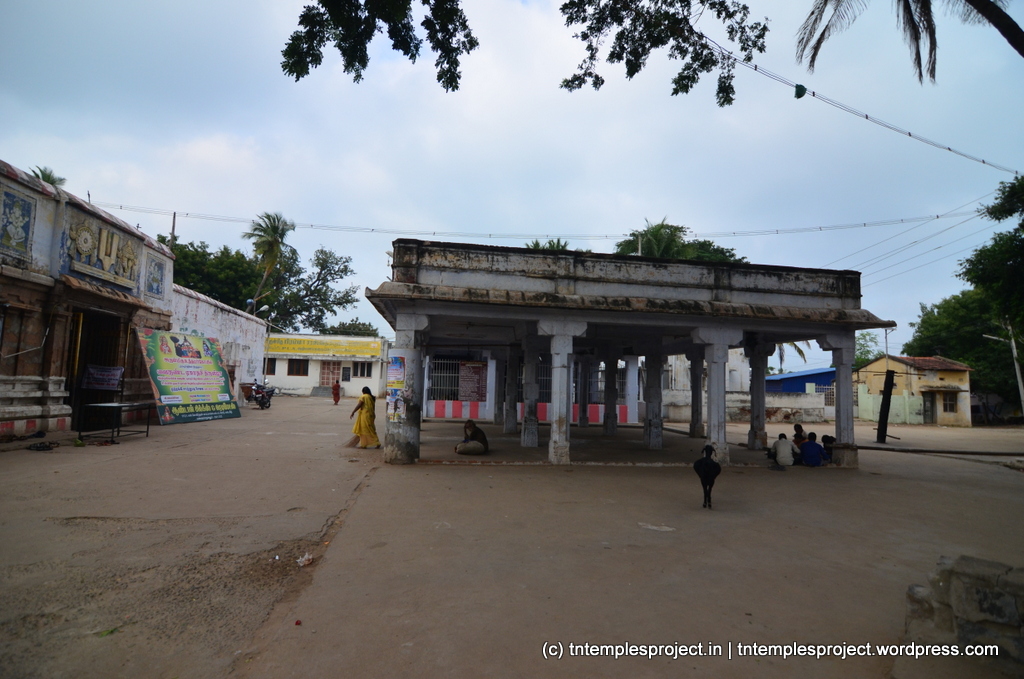Basic information about the temple
| Moolavar: | Purushottama Perumal | Ambal / Thayar: | Poornavalli |
| Deity: | Perumal | Historical name: | Kadambavanam, Tirukarambanoor |
| Vriksham: | Vaazhai | Teertham: | Kadamba Teertham |
| Agamam: | Age (years): | Timing: | 6.30 to 12 & 4.30 to 8 | Parikaram: |
| Temple group: | Divya Desam | – | |
| Sung by: | Temple set: | ||
| Navagraham: | Nakshatram: | ||
| City / town: | Uttamar Koil | District: | Tiruchirappalli |
| Maps from (click): | Current location | Tiruchirappalli (12 km) | Perambalur (55 km) |
| Thanjavur (61 km) | Ariyalur (62 km) |
Location
Uttamar koil or Pichandar Koil (or Bichandar Koil, both corruptions of Bhikshatanar Koil) is located on the northern outskirts of Trichy.
Sthala puranam and temple information
Deities are considered to belong to one of three types – Uttamar, Madhyamar and Adhamar. An adhama deity punishes devotees if they do not worship it. A madhyama deity rewards and blesses devotees in proportion to their extent of worship. The uttama deity gives without needing to be worshipped. Lord Vishnu is considered the highest of uttamas – Purushottama – which is why this temple is known as Uttamar Koil.
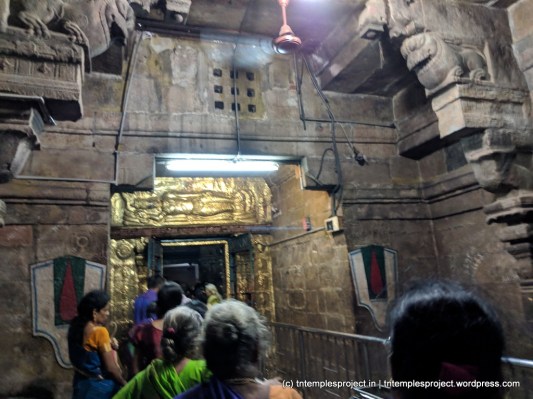
The place, the temple and its puranam are closely linked to the legend of Siva as Bhikshatanar (read here). Siva, as the itinerant mendicant, went to various kshetrams to rid himself of the dosham acquired as a result of plucking Brahma’s fifth head. Finally at Tirukarambanur (historical name for Uttamar Koil, and see next paragraph), his hunger was sated when Lakshmi filled his begging bowl and the food did not vanish. Since She filled his bowl, she is aptly named Poornavalli Thayar here. Siva, as Bhikshatanar, is present in the Lingam facing west, behind the Perumal shrine.
This used to be a forest of kadamba (or karamba) trees (Kadamba Vaneswarar at Kulithalai is not too far off), and hence the place used to be called Kadambanur. Brahma is said to have been created from the navel of Vishnu. Once, Vishnu wanted to test Brahma, and hid himself inside a kadamba tree. A worried Brahma searched, and finding he couldn’t locate the Lord, prayed to a kadamba tree here after which Lord Vishnu reappeared, and gave him the power of creation. Devotees believe that their fates can be re-written by worshipping Brahma at this temple (as at Tirupattur).
The temple tank is gsaid to have been created from the holy water used by Brahma for the Lord’s tirumanjanam. Sage Kadambar, who was in penance on the banks of the temple tank, is said to have been blessed with the sight of the Trinity with their consorts, here.
It is generally regarded that there are seven gurus – Deva Guru (Brhaspati), Asura Guru (Sukra), Siva Guru (Dakshinamurti), Brahma Guru (Brahma), Vishnu Guru (Varadaraja Perumal), Sakti Guru (Parvati) and Gnana Guru (Subrahmanyar). This temple identifies and enshrines all seven. There are separate shrines for Siva as Bhikshatanar, as well as for Brahma and Saraswati. This is considered a Guru sthalam, and Brahma faces south (as Dakshinamurti normally does).
The temple has a strong connection with the Ramanayam. The temple is considered to have been constructed by Janaka, father of Sita. During a yagam he organized here, the sages were disturbed by the barking of a dog, leading to them forgetting their mantrams. Another elderly sage advised Janaka to pray to the Kadamba tree, and resume the yagam afresh. When that yagam was completed successfully, Janaka searched for the sage, who advised him to again pray to the Kadama tree, at which Vishnu as Purushottamar (with Brahma attached to His navel) and Siva as Bhikshatanar, emerged.
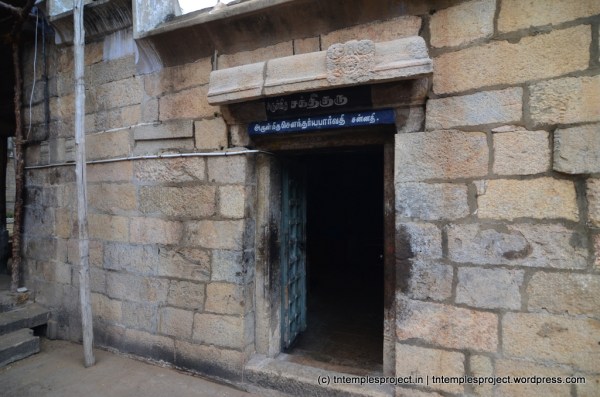
Dasaratha, father of Rama, is said to have conducted pujas and yagnas here to beget children (some stories even suggest this is the place he performed the sacrifice at which Agni came out with a pot of payasam for the queens to consume, in order to beget children).
This temple is one of very few that have a shrine for Brahma, and one of even fewer that house the trinity. Interestingly, there seems to be some connection amongst Brahma based legends in this region! The other temple in the region to have shrines for all three deities is the Hara Saaba Vimochana Perumal temple at Kandiyur, where the above-mentioned story of Bhikshatanar ends). Also, the Brahmapureeswarar temple at nearby Tirupattur is closely connected with Brahma.
This temple was built by the medieval cholas and is dated to the late 8th century CE, with later additions by the Vijayanagara kings and Madurai Nayaks. During the Anglo-French war in the mid 18th century, this temple housed several of the army; however, no damage was done to the temple (which can’t be said of other temples in the region).
Other information for your visit
Close to this temple are
- Tiruvellarai Pundarikaksha Perumal temple, a Divya Desam, is located about 12 km away
- Gneeli Vaneswarar temple at Tiruppaigneeli (Paadal Petra Sthalam)
- Bhoominathar temple at Mannachanallur
- Sundararaja Perumal temple at Palayanallur, and
- Aadi Narayana Perumal temple at Gopurapatti.
The last 2 temples in the list above are closely related to the history of the Srirangam Ranganathar temple.
Contact
Gallery
